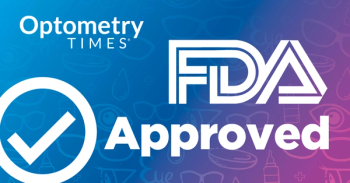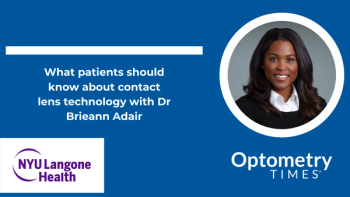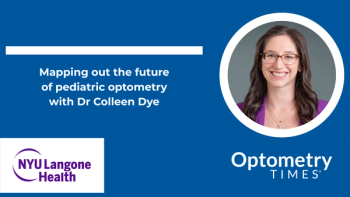Dry eye disease (DED) is more prevalent than many might expect, affecting about 37.1 million individuals worldwide and 16.4 million in the US. However, only about 28.1 million globally and 9.1 million domestically treat their symptoms with some form of medication.1
Although patients sometimes come in specifically requesting a DED evaluation, others frequently report blurry vision, fluctuating clarity, and general eye discomfort when prompted with a survey such as the Standardized Patient Evaluation of Eye Dryness (SPEED) questionnaire. Many individuals do not recognize their symptoms as DED—they just know their eyes do not feel right.
Understanding the signs, symptoms, and root cause
Unconventional signs and symptoms of DED
Dryness, irritation, and redness are hallmark symptoms of dry eye disease (DED). However, patients may also experience less obvious signs that impact their daily lives. Recognizing these unconventional signs can lead to earlier diagnosis and better treatment strategies for DED, improving the quality of life for affected patients.
Slower reading speeds
Patients with DED may struggle with prolonged reading (ie, more than an average of 30 minutes) and reading speed.1,2 A study of 186 adults from the Ocular Surface Disease and Dry Eye Clinic at the Wilmer Eye Institute in Maryland found that individuals with moderate to severe DED read 32 words/min slower than those without DED, representing a reduced reading speed of 10%.1 This significantly impacted their ability to complete tasks requiring sustained visual concentration, such as reading, driving, and performing surgery. Of the patients, 116 had clinically significant DED, 39 reported symptoms of DED but did not have clinical findings, and 31 were healthy controls.
In another study of 91 patients, aloud and sustained silent reading speeds were 10 words/min slower in the 41 patients with clinically significant DED compared with the 50 control patients.2 This represented a 14% slower reading speed in the DED group. The researchers also found that the eyes of patients with slower aloud and silent reading speeds had greater corneal staining.
Fluctuating or poor visual performance
Beyond simple blurriness, DED can cause variable vision quality that worsens over time, particularly during screen use and night driving. This visual instability is often linked to a compromised tear film affecting light refraction. In a large cross-sectional study of 3549 office workers, evidence showed that digital screen use was linked to a greater incidence of DED and, as a byproduct, affected mental health and work productivity.3
Light sensitivity or photophobia
Sensitivity to bright light, particularly LEDs and fluorescent lights, is another unconventional sign and symptom of DED. Known as photophobia, light sensitivity is related to increased corneal nerve exposure and heightened inflammation4 and may lead to discomfort in environments such as offices and vehicles at night. Additionally, patients with photophobia report more severe symptoms than patients with DED without photophobia, are at a greater risk for a chronic disease course, and are less likely to feel ocular pain relief with artificial tears.5,6
Sleep quality
A large meta-analysis, including results from 21 studies and 419,218 individuals, showed that those with DED had worsened sleep quality compared with controls.7 The individuals with DED had poorer subjective sleep quality, longer sleep latency, and a higher risk for unhealthy sleep duration. Researchers concluded that the risk of a sleep disorder was higher for patients with DED compared with controls.
References
- Dry eye syndrome slows reading rate, study suggests. Johns Hopkins Medicine. November 15, 2018. Accessed February 6, 2025. https://www.hopkinsmedicine.org/news/newsroom/news-releases/2018/11/dry-eye-syndrome-slows-reading-rate-study-suggests
- Mathews PM, Ramulu PY, Swenor BS, Utine CA, Rubin GS, Akpek EK. Functional impairment of reading in patients with dry eye. Br J Ophthalmol. 2017;101(4):481-486. doi:10.1136/bjophthalmol-2015-308237
- Al-Mohtaseb Z, Schachter S, Shen Lee B, Garlich J, Trattler W. The relationship between dry eye disease and digital screen use. Clin Ophthalmol. 2021;15:3811-3820. doi:10.2147/OPTH.S321591
- Galor A, Levitt RC, Felix ER, Sarantopoulos CD. What can photophobia tell us about dry eye? Expert Rev Ophthalmol. 2016;11(5):321-324. doi:10.1080/17469899.2016.1222905
- Galor A, Zlotcavitch L, Walter SD, et al. Dry eye symptom severity and persistence are associated with symptoms of neuropathic pain. Br J Ophthalmol. 2015;99(5):665-668. doi:10.1136/bjophthalmol-2014-306057
- Galor A, Batawi H, Felix ER, et al. Incomplete response to artificial tears is associated with features of neuropathic ocular pain. Br J Ophthalmol. 2016;100(6):745-749. doi:10.1136/bjophthalmol-2015-307094
- Gu Y, Cao K, Li A, et al. Association between sleep quality and dry eye disease: a literature review and meta-analysis. BMC Ophthalmol. 2024;24(1):152. doi:10.1186/s12886-024-03416-7
The increased incidence of DED is fueled by a modern lifestyle that includes excessive screen time, environmental stressors, and prolonged contact lens wear. Beyond the classic symptoms of irritation, dryness, and redness, DED affects patients in ways that often go unnoticed (Sidebar). DED can impact work productivity, reading speed, photophobia, and even sleep quality, which underscores the importance of early detection and treatment.2-8
Regardless of whether a patient has evaporative DED (ie, meibomian gland dysfunction) or aqueous-deficient DED (ie, insufficient tear production), the underlying culprit is the same—inflammation. Inflammation is both a cause and a consequence of DED, creating a vicious cycle that leads to worsening symptoms and progressive ocular surface damage.
As the disease advances, inflammatory mediators disrupt tear film stability, damage corneal and conjunctival cells, and impair meibomian gland function.9 This ongoing inflammation makes intervention with pharmaceuticals and other measures crucial for symptom relief and preventing long-term ocular surface damage.
Diagnosing DED in clinical practice
Patients do not always self-report dry eye symptoms. I rely on several tools to uncover DED, including a validated survey that helps quantify symptoms (eg, the SPEED questionnaire). In my practice, patients who score 8 or above warrant further investigation. This includes tear breakup time, ocular surface staining, meibomian gland function, and matrix metalloproteinase 9 testing.
The correlation of clinical signs with patient symptoms is key to diagnosing DED in clinical practice. Some clinicians may see DED but hesitate to treat it due to a lack of strong symptoms. This methodology, however, overlooks the progressive nature of the disease. Timely and consistent treatment is key to controlling inflammation, especially when symptoms fluctuate.
Sometimes, patient resistance to treatment or lack of adherence to existing treatments becomes a barrier to symptom relief. Educating patients that DED is a chronic inflammatory condition requiring long-term management—just like high blood pressure or diabetes—is key. I make a point to highlight to patients how untreated DED can impact their vision, quality of life, and even surgical outcomes if they ever need cataract or refractive surgery.
Treatment approaches
Setting realistic expectations can be challenging, as patients often expect instantaneous relief. Traditionally, DED treatments take time to work and frequently require a multimodal approach. Historically, we relied on prescription eye drops like cyclosporine 0.05% (Restasis; AbbVie), lifitegrast 5% (Xiidra; Bausch + Lomb), and cyclosporine 0.09% (Cequa; Sun Ophthalmics). Although effective at managing inflammation across multiple pathways, such treatments may be associated with drawbacks including prolonged time to efficacy; burning and irritation upon instillation; and dysgeusia (ie, altered taste), all of which may lead to a high dropout rate.10
Studies show that up to 90% of patients discontinued these treatments within a year, largely due to tolerability concerns and perceived lack of efficacy.11 A retrospective cohort study of 73,356 patients from the American Academy of Ophthalmology’s IRIS Registry showed that more than half did not obtain a refill for their prescribed medication (cyclosporine 0.05%, lifitegrast 5%, and cyclosporine 0.09%) and 90% discontinued therapy. Very few (4%) switched to a different DED therapy. The main reasons for switching or discontinuing therapy included lack of efficacy and adverse events.
Cyclosporine is typically a first-line treatment for DED. One of the most exciting advancements in cyclosporine formulations is cyclosporine 0.1% dissolved in a semifluorinated alkane, perfluorobutylpentane (Vevye; Harrow), the first and only cyclosporine approved for the treatment of the signs and symptoms of DED. This next-generation treatment offers significant advantages over older formulations of cyclosporine, including its role in reducing inflammation, increasing tear production, and repairing corneal surface damage.12
Unlike traditional cyclosporine drops, my patients have reported minimal stinging and burning upon the instillation of Vevye. Additionally, I have seen a high refill rate, indicating high patient satisfaction.
My experience corresponds with clinical studies indicating that 99.8% of patients experienced no or mild instillation site pain.12-15 Further, studies have shown clinically meaningful and statistically significant improvement over perfluorobutylpentane in total corneal fluorescein staining by day 15.16,17
In my practice, a comprehensive approach to DED management is key. We can ensure long-term success by integrating patient education, multimodal treatment, and follow-up strategies. The key is understanding that inflammation is at the core of DED and treating it should be mandatory.
Conclusion
With improved diagnostic tools and the emergence of better-tolerated, more effective treatments, we can enhance our patients’ visual outcomes and quality of life.
References
- Dry eye products global market report 2025 – by product (antibiotic drops, hormone drops, artificial tears, other products), by type (prescription drugs, over-the-counter drugs), by distribution channel (hospital pharmacies, retail pharmacies, specialty clinics, e-commerce, other distribution channel) – market size, trends, and global forecast 2025-2034. The Business Research Company. January 2025. Accessed February 6, 2025. https://www.thebusinessresearchcompany.com/report/dry-eye-products-global-market-report
- Dry eye syndrome slows reading rate, study suggests. News release. Johns Hopkins Medicine. November 15, 2018. Accessed February 6, 2025. https://www.hopkinsmedicine.org/news/newsroom/news-releases/2018/11/dry-eye-syndrome-slows-reading-rate-study-suggests
- Mathews PM, Ramulu PY, Swenor BS, Utine CA, Rubin GS, Akpek EK. Functional impairment of reading in patients with dry eye. Br J Ophthalmol. 2017;101(4):481-486. doi:10.1136/bjophthalmol-2015-308237
- Al-Mohtaseb Z, Schachter S, Shen Lee B, Garlich J, Trattler W. The relationship between dry eye disease and digital screen use. Clin Ophthalmol. 2021;15:3811-3820. doi:10.2147/OPTH.S321591
- Galor A, Levitt RC, Felix ER, Sarantopoulos CD. What can photophobia tell us about dry eye? Expert Rev Ophthalmol. 2016;11(5):321-324. doi:10.1080/17469899.2016.1222905
- Galor A, Zlotcavitch L, Walter SD, et al. Dry eye symptom severity and persistence are associated with symptoms of neuropathic pain. Br J Ophthalmol. 2015;99(5):665-668. doi:10.1136/bjophthalmol-2014-306057
- Galor A, Batawi H, Felix ER, et al. Incomplete response to artificial tears is associated with features of neuropathic ocular pain. Br J Ophthalmol. 2016;100(6):745-749. doi:10.1136/bjophthalmol-2015-307094
- Gu Y, Cao K, Li A, et al. Association between sleep quality and dry eye disease: a literature review and meta-analysis. BMC Ophthalmol. 2024;24(1):152. doi:10.1186/s12886-024-03416-7
- Chhadva P, Goldhardt R, Galor A. Meibomian gland disease: the role of gland dysfunction in dry eye disease. Ophthalmology. 2017;124(11S):S20-S26. doi:10.1016/j.ophtha.2017.05.031
- White DE, Zhao Y, Ogundele A, et al. Real-world treatment patterns of cyclosporine ophthalmic emulsion and lifitegrast ophthalmic solution among patients with dry eye. Clin Ophthalmol. 2019;13:2285-2292. doi:10.2147/OPTH.S226168
- Mbagwu M. Characterization of discontinuation and switching patterns of dry eye disease medications using linked EHR registry and claims data. Paper presented at: ASCRS Annual Meeting 2024; April 5-9, 2024; Boston, MA.
- Sheppard JD, Wirta DL, McLaurin E, et al. A water-free 0.1% cyclosporine A solution for treatment of dry eye disease: results of the randomized phase 2B/3 ESSENCE study. Cornea. 2021;40(10):1290-1297. doi:10.1097/ICO.0000000000002633
- Vevye. Prescribing information. Harrow; 2023. Accessed March 12, 2025. https://vevyepatient.stagingcontent.site/_files/ugd/984798_fa67b9451a1f4a72bcc5422433d876c0.pdf
- Akpek EK, Wirta DL, Downing JE, et al. Efficacy and safety of a water-free topical cyclosporine, 0.1%, solution for the treatment of moderate to severe dry eye disease: the ESSENCE-2 randomized clinical trial. JAMA Ophthalmol. 2023;141(5):459-466. doi:10.1001/jamaophthalmol.2023.0709
- Akpek EK, Sheppard JD, Hamm A, Angstmann-Mehr S, Krösser S. Efficacy of a new water-free topical cyclosporine 0.1% solution for optimizing the ocular surface in patients with dry eye and cataract. J Cataract Refract Surg. 2024;50(6):644-650. doi:10.1097/j.jcrs.0000000000001423
- Sheppard JD, Wirta DL, McLaurin E, et al. Water-free 0.1% cyclosporine A solution for treatment of dry eye disease: results of the randomized phase 2B/3 ESSENCE study. Cornea. 2021;40(10):1-8. doi:10.1097/ICO.0000000000002633
- Akpek EK, Wirta DL, Downing JE, et al. Efficacy and safety of a water-free topical cyclosporine, 0.1%, solution for the treatment of moderate to severe dry eye disease: the ESSENCE-2 randomized clinical trial. JAMA Ophthalmol. 2023;141(5):459-466. doi:10.1001/jamaophthalmol.2023.0709.




















































.png)


